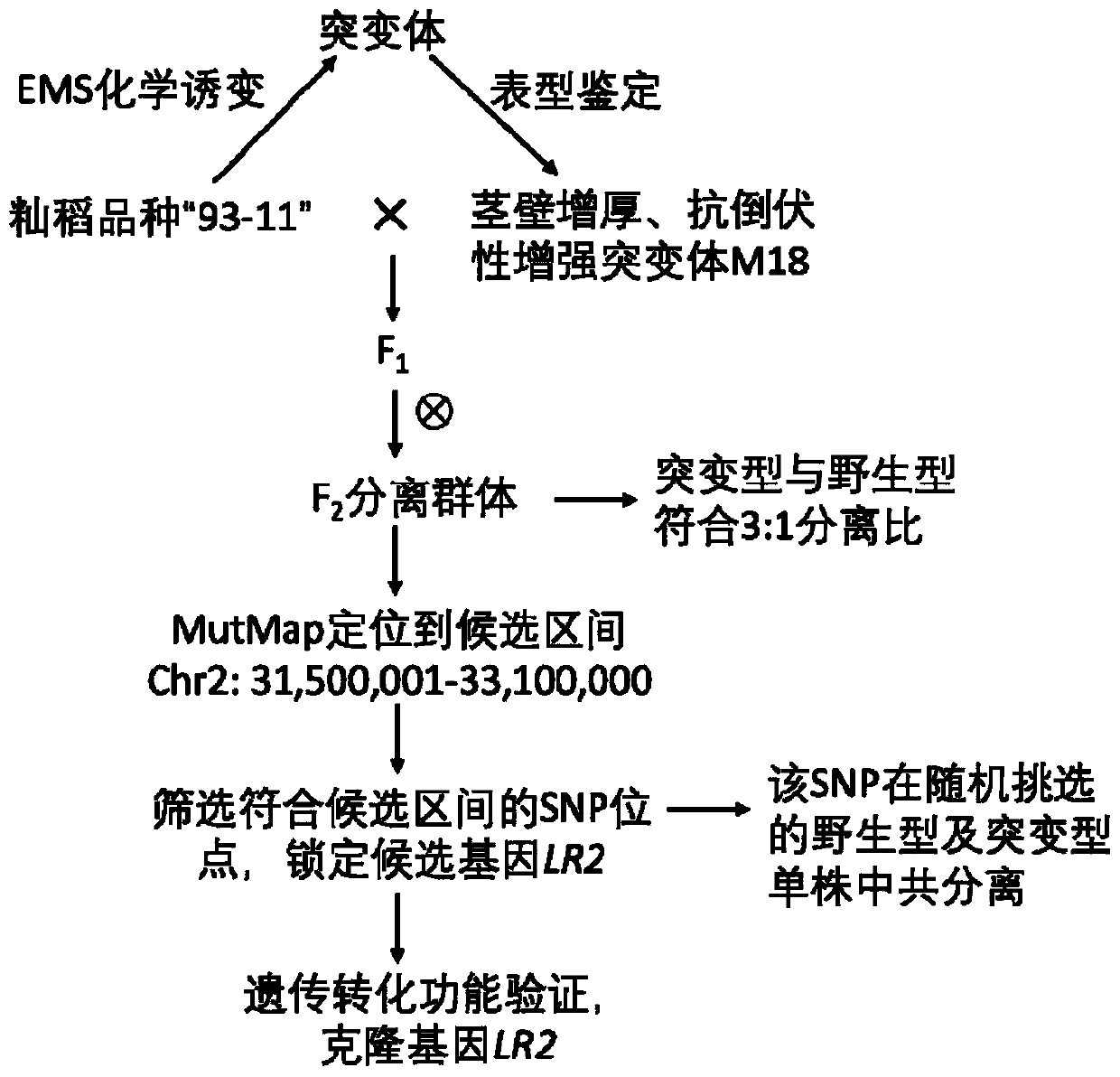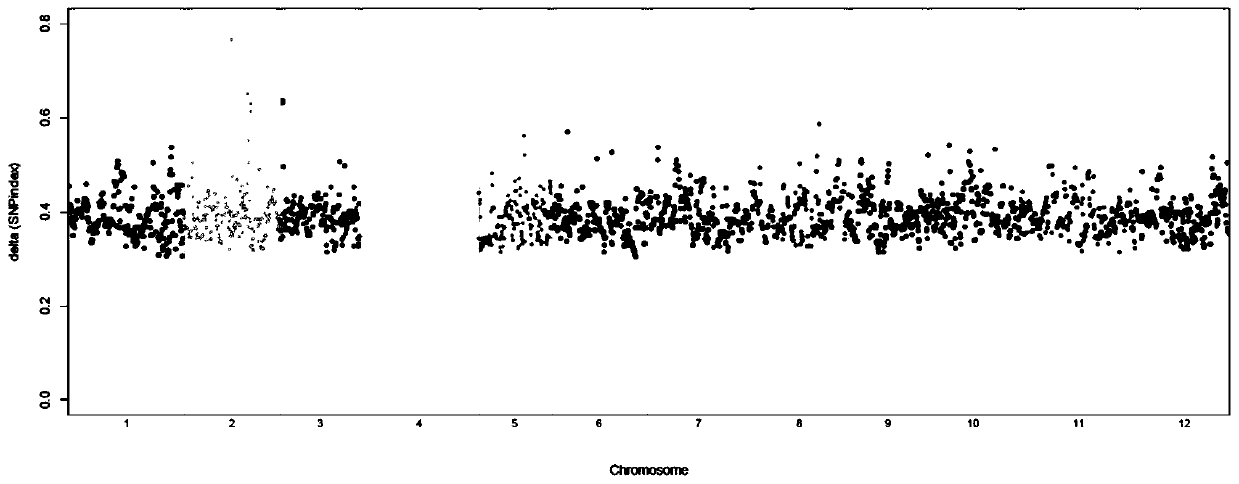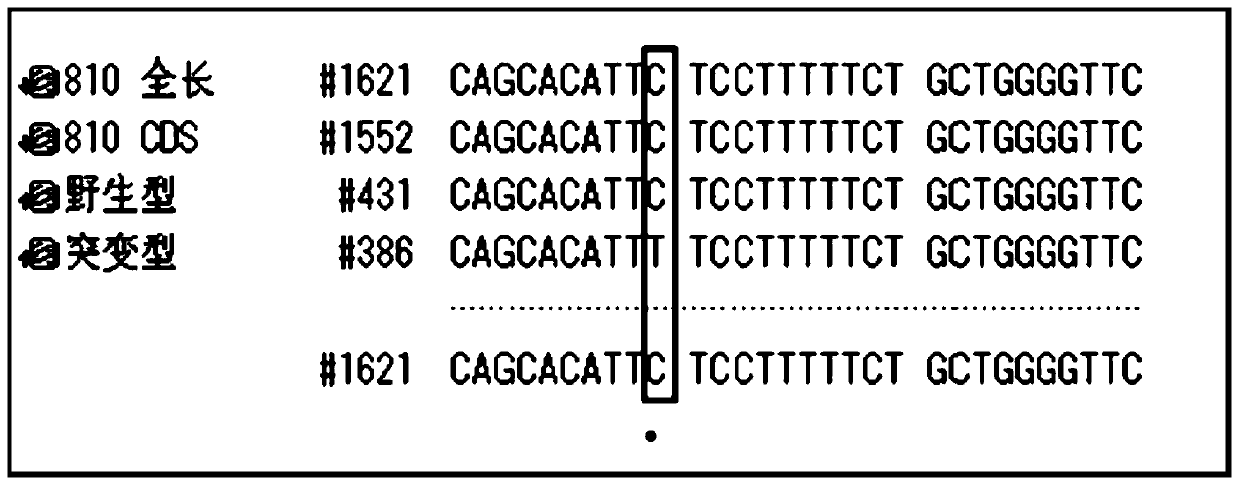LR2 gene regulating stem thickness and breaking-resistant strength of rice and application thereof in lodging resistance
A technology of lodging resistance and genetics, applied in the fields of application, genetic engineering, plant genetic improvement, etc., can solve the problems of reducing rice quality, increasing the difficulty of harvesting, increasing production costs, etc., and achieve the effect of excellent genetic resources
- Summary
- Abstract
- Description
- Claims
- Application Information
AI Technical Summary
Problems solved by technology
Method used
Image
Examples
Embodiment 1
[0028] Embodiment 1: Comparison of lodging resistance of mutant M18 and "93-11" wild type
[0029]The material of the test for inducing mutants came from the indica rice variety "93-11". After the seeds were treated with 0.015% (volume ratio) ethyl methanesulfonate (ie EMS) for 12 hours, the M1 generation was obtained and selfed The M2 generation was obtained, and the mutant M18 with thickened culm wall was found. Selfing multiple generations showed that the mutant trait could be genetically planted stably. Rice mutants M18 and “93-11” were planted, and the bending resistance of the stem base was investigated. The measured values are shown in Table 1.
[0030] Table 1 Measurement of phenotypic values of rice mutant M18 and rice variety "93-11"
[0031]
[0032] **, extremely significant difference, P value ≤0.01.
Embodiment 2
[0033] Example 2: The positioning of LR2 and the determination of candidate genes
[0034] 1. Separation population construction and localization of LR2
[0035] The rice mutant M18, which was stably inherited through multiple generations of self-crossing, was used as the female parent to backcross the rice variety "93-11" to obtain F 1 Positive individual plants, select one of the F 1 F 2 Separate groups. 248 F. 2 The segregated populations included 189 plants with normal phenotype and 59 plants with mutant phenotype. After chi-square (χ 2 ) test, the separation ratio is 3:1(χ 2 (3:1) =0.132 0.05,1 =3.84), indicating that the mutant is controlled by a single recessive nuclear gene. Using the strategy of MutMap, the F 2 The mixed DNA samples of 30 wild-type and mutant strains in the population were sequenced separately, the SNP frequency calculation of the offspring and the screening of candidate sites were performed, and the candidate interval was locked as Chr2: 31,...
Embodiment 3
[0043] Example 3: Verification of transgenic function of LR2
[0044] Using the sequence of the rice material "Nipponbare" (the genome sequence of which has been published and is a conventional variety) as a reference, the LR2 gene was designed using the online tool CRISPR-P (http: / / cbi.hzau.edu.cn / CRISPR2 / ). Knockout targets and primers (Table 3). The sgRNAs expression cassette was constructed using the Overlapping PCR method, and then the sgRNAs expression cassette and the pYLCRISPR Cas9Pubi-H expression vector were assembled using the Golden Gatecloning strategy (see Figure 4 ). The specific vector construction process can refer to the method reported by Ma et al. (Ma X, Zhang Q, Zhu Q, et al. A robust CRISPR / Cas9 system for convenient, high-efficiency multiplex genome editing in monocot and dicot plants[J]. Molecular plant, 2015, 8(8):1274-1284). After the primers "SPL" and "SPR" were sequenced and found that the sgRNAs encoded by the constructed CRISPR vector were cor...
PUM
 Login to View More
Login to View More Abstract
Description
Claims
Application Information
 Login to View More
Login to View More - R&D Engineer
- R&D Manager
- IP Professional
- Industry Leading Data Capabilities
- Powerful AI technology
- Patent DNA Extraction
Browse by: Latest US Patents, China's latest patents, Technical Efficacy Thesaurus, Application Domain, Technology Topic, Popular Technical Reports.
© 2024 PatSnap. All rights reserved.Legal|Privacy policy|Modern Slavery Act Transparency Statement|Sitemap|About US| Contact US: help@patsnap.com










